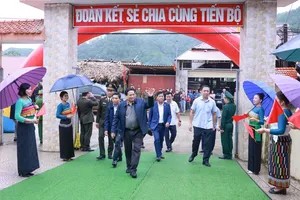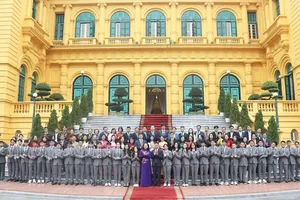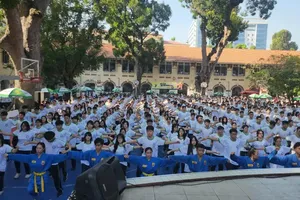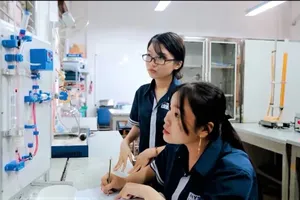
According to the comprehensive plan to develop the IT human resources, Vietnam needed 1 million workers in the IT field in 2020. Yet the reality shows that there are only 600,000 IT students being trained in 400 higher educational institutes and 8 key IT training centers nationwide.
Statistics from the Institute of Information Technology Strategy (under the Ministry of Information & Communications) show that 72 percent of IT students lack practical experience, while 42 percent are weak at team work. Only 15 percent of IT graduates satisfy the demands of employers.
Vietnam now has over 700 IT companies working in key fields of the IT industry, including 220 foreign ones. They mostly locate in major cities or software parks.
Notably, despite a high job potential, the AI field still attracts little attention from both learners and trainers. There is no formal university department or school to specifically provide tertiary education in this field. Most curriculum focus on software developing, which is a rather old trend of the previous decade. This calls for a serious curriculum redesign to answer the current needs of IT companies, both domestic and international.
There should be an establishment of AI departments in universities or the development of such majors as computer vision, natural language processing, Big Data, robotics. Tertiary educational institutes should cooperate with IT businesses for internship programs, career guiding fairs, academic challenges, and training equipment provision (like server clusters, computing clusters, GPU, robots, IoT devices).
Experts voiced that in order for HCMC to own sufficient core AI human resources, the municipal authorities must first identify the market needs and the ability to apply research result in reality. They then have to actively link the development of smart city, innovative urban areas with the growth of talented AI employees.
These actions will gradually form a complete AI ecosystem so that HCMC can transform into a database center of the whole Southeast Asian region in 2030, and of the world in the far future.
There must be clear short-term as well as long-term strategies to turn HCMC into a smart city, including the three key points of research and training, technology mastering, and innovation promotion.
Regarding the first key point, more investment should be pour into the AI field via supporting funds, collaboration with national and international partners to take advantage of all possible strengths.
A kind of ‘shared university’ for AI training could be formed, where educational facilities are located in one place, and the teaching staff or research teams come to perform their tasks. This model does need specific policies to regulate particular responsibilities and rights of each partner, as well as the role of the municipal authorities in the project.
Director of Vietnam National University – HCMC Vu Hai Quan stated that the potential of key AI research teams directly shape the training direction for new AI workers. They are the model for the young generations to look up to.
Therefore, the AI human resources training project should consist of financial aid for major AI research teams to expand their study in various fields, the construction of AI labs, the organization of academic contests about AI to tackle existing problems in the community.
These actions will no doubt increase the position of Vietnam in the global AI top list and the awareness of AI importance in the society.
























